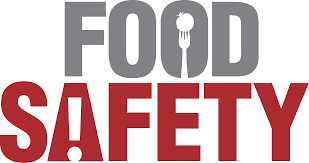There
is no official definition of food safety, mainly because the laws and
guidelines should be followed depending on where and what sort of food service
you provide. However, each restaurant should follow certain basic rules for
food safety. HACCP has also been created to serve its customers and help
companies in food facilities. HACCP is a globally recognized system of food
management that addresses food safety and regulates potential biological,
physical and chemical hazards. It can be simply defined as a system which was
set up to recognize potential food safety issues and methods to control them
and also to reduce diseases and contamination among the customers. If you go
through the official website of HACCP, you will find out that it contains a
long list of how to recognize risks and methods to regulate them. The HACCP
website is informative and worth reading thoroughly if you have time, but it
can be condensed to a much simpler format.
Some of the food safety rules
and regulations one should follow before setting up a business are as follows:
Food and General Supply Storage:
Food,
Spices and other edibles should always be kept away from the cleaning supplies.
This implies that the cleaning machine should not be positioned closer to the
kitchen area or the food preparation and storage region. Everybody should
follow cross-contamination prevention practices before or while moving between
the two areas.
Cleaning Processes Should Always Be
Clear:
Cleaning
processes and sanitizing rules for all food services include proper hand
washing procedures, cleaning and sanitizing techniques for the kitchen, dining
and food storage areas. Also, don’t forget about the region of waste disposal.
An important element of operating a secure and tidy restaurant is proper
disposal of waste and recycling. Dirty dumpsters attract pests, and many pests
are hard and expensive to get rid of once they have gone in.
Raw Meats, Poultry, Seafood and Eggs Pose
Potential Risk:
Items
like raw meats, seafood, eggs and poultry should always be stored away from all
other food items. All of these should have a separate preparation area with
separate cuttings boards and washing stations and all should be color coded for
easy and quick identification. This will help prevent cross contamination which
is one of the major problems, every restaurant faces today.
Proper Dry Storage and Refrigeration:
Appropriate
refrigeration and dry storage is crucial and everyone should follow the process
rules. For proper storage and processing, product labels should always be
verified.
Maintain Accurate Records:
Food safety compliance implies that you need to maintain accurate records of all you
do. This includes food temperature logs, ordering histories, task checklists
and corrective action logs when things don't go as scheduled. If your
restaurant is ever audited or inspected, these things should help you in
proving that you have taken care of every little detail.

No comments:
Post a Comment